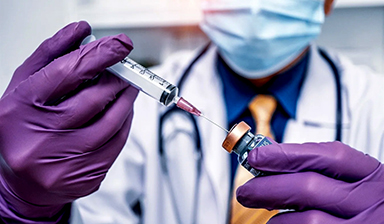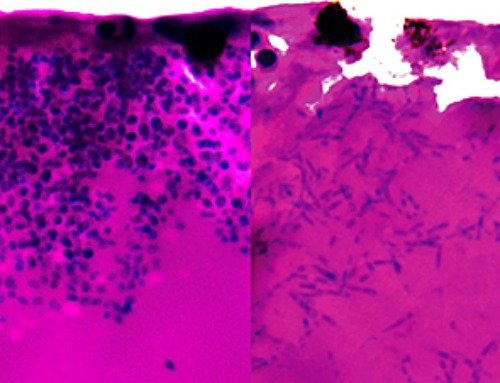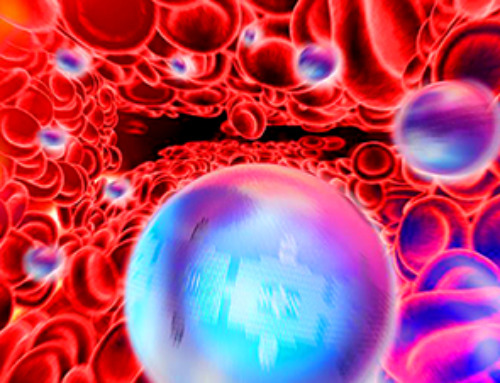In a recent article published in npj Vaccines, researchers detailed the development of a novel cancer vaccine that combines a plant-derived nanoparticle adjuvant, Nano-11, with a clinically tested STING agonist, ADU-S100. The primary objective was to enhance antitumor immunity through an innovative intradermal vaccination approach.
This study aims to address the limitations of existing cancer vaccines by improving their efficacy and safety, ultimately contributing to more effective cancer treatment strategies.
Background
Cancer remains one of the leading causes of mortality worldwide, driving the continuous search for effective therapeutic strategies. Traditional cancer treatments, such as chemotherapy and radiation, often come with significant side effects and limited specificity.
In contrast, cancer vaccines offer a promising alternative by harnessing the body’s immune system to target and eliminate tumor cells. However, many existing vaccines have shown suboptimal immune responses, highlighting the need for improved adjuvants that can enhance the effectiveness of these vaccines.
Adjuvants play a crucial role in vaccine formulation by boosting the immune response to the antigen. Nano-11, a plant-derived nanoparticle, has shown potential in preclinical studies for its ability to activate immune pathways. Additionally, ADU-S100, a synthetic STING agonist, has been recognized for its capacity to stimulate innate immune responses, particularly through the activation of dendritic cells.
The combination of these two agents is hypothesized to synergistically enhance the immune response against tumors, leading to improved therapeutic outcomes.
The Current Study
The study employed a series of well-defined experimental protocols to evaluate the efficacy of the Nano-11 and ADU-S100 combination in inducing antitumor immunity. Mice were used as the primary model organism, with specific strains selected for their relevance to cancer research. The vaccination regimen involved two intradermal injections administered 21 days apart, with groups receiving either the combination of Nano-11 and ADU-S100, individual components, or a control treatment.
To assess immune responses, various assays were conducted, including enzyme-linked immunosorbent assays (ELISA) to measure antibody titers and ELISpot assays to quantify antibody-secreting cells. Flow cytometry was utilized to analyze the phenotypic characteristics of immune cells and their activation status. Tumor growth was monitored in vivo to evaluate the therapeutic efficacy of the vaccination strategy.
Statistical analyses were performed to determine the significance of the results, employing one- or two-way ANOVA followed by appropriate post-hoc tests.
Results and Discussion
The study demonstrated that the combination of Nano-11 and ADU-S100 significantly enhanced the immune response compared to either agent alone. Mice receiving the combination vaccine exhibited higher levels of OVA-specific antibodies, indicating a robust humoral immune response. ELISpot assays revealed a marked increase in the number of antibody-secreting cells in the bone marrow of vaccinated mice, suggesting that the combination effectively stimulates B cell activation and differentiation.
Flow cytometry analyses provided insights into the cellular immune responses elicited by the vaccination. The combination treatment led to a notable increase in the activation of CD8+ T cells, which are critical for targeting and destroying tumor cells.
Enhanced cytotoxic activity was further corroborated by in vivo tumor challenge experiments, where mice vaccinated with the combination showed significantly reduced tumor growth compared to control groups. This finding underscores the potential of the Nano-11 and ADU-S100 combination to elicit a strong antitumor immune response.
The study also explored the underlying mechanisms driving the observed immune activation. The authors hypothesized that the synergistic effects of Nano-11 and ADU-S100 may be attributed to the dual activation of both innate and adaptive immune pathways.
Nano-11 likely enhances antigen presentation by dendritic cells, while ADU-S100 stimulates the production of pro-inflammatory cytokines, creating a favorable environment for T-cell activation. This multifaceted approach to immune stimulation may explain the superior efficacy of the combination vaccine.
The safety profile of the vaccination strategy was also assessed, with no significant adverse effects reported in the treated mice. This is a critical consideration for the translation of these findings into clinical applications, as safety remains a paramount concern in cancer immunotherapy.
Conclusion
The study presents compelling evidence supporting the efficacy of a novel cancer vaccine formulated with the combination of Nano-11 and ADU-S100. The findings indicate that this innovative approach significantly enhances antitumor immunity through robust activation of both humoral and cellular immune responses.
The research not only addresses the limitations of existing cancer vaccines but also provides a promising avenue for future therapeutic development. The successful demonstration of this combination in preclinical models lays the groundwork for subsequent clinical trials, with the potential to improve outcomes for cancer patients.
Overall, this study contributes valuable insights into the field of cancer immunotherapy, emphasizing the importance of adjuvant strategies in vaccine design.
Journal Reference
Hernandez-Franco, JF., et al. (2024). Intradermal vaccination with a phytoglycogen nanoparticle and STING agonist induces cytotoxic T lymphocyte-mediated antitumor immunity. npj Vaccines. DOI: 10.1038/s41541-024-00943-8, https://www.nature.com/articles/s41541-024-00943-8
News
AI Helped Scientists Stop a Virus With One Tiny Change
Using AI, researchers identified one tiny molecular interaction that viruses need to infect cells. Disrupting it stopped the virus before infection could begin. Washington State University scientists have uncovered a method to interfere with a key [...]
Deadly Hospital Fungus May Finally Have a Weakness
A deadly, drug-resistant hospital fungus may finally have a weakness—and scientists think they’ve found it. Researchers have identified a genetic process that could open the door to new treatments for a dangerous fungal infection [...]
Fever-Proof Bird Flu Variant Could Fuel the Next Pandemic
Bird flu viruses present a significant risk to humans because they can continue replicating at temperatures higher than a typical fever. Fever is one of the body’s main tools for slowing or stopping viral [...]
What could the future of nanoscience look like?
Society has a lot to thank for nanoscience. From improved health monitoring to reducing the size of electronics, scientists’ ability to delve deeper and better understand chemistry at the nanoscale has opened up numerous [...]
Scientists Melt Cancer’s Hidden “Power Hubs” and Stop Tumor Growth
Researchers discovered that in a rare kidney cancer, RNA builds droplet-like hubs that act as growth control centers inside tumor cells. By engineering a molecular switch to dissolve these hubs, they were able to halt cancer [...]
Platelet-inspired nanoparticles could improve treatment of inflammatory diseases
Scientists have developed platelet-inspired nanoparticles that deliver anti-inflammatory drugs directly to brain-computer interface implants, doubling their effectiveness. Scientists have found a way to improve the performance of brain-computer interface (BCI) electrodes by delivering anti-inflammatory drugs directly [...]
After 150 years, a new chapter in cancer therapy is finally beginning
For decades, researchers have been looking for ways to destroy cancer cells in a targeted manner without further weakening the body. But for many patients whose immune system is severely impaired by chemotherapy or radiation, [...]
Older chemical libraries show promise for fighting resistant strains of COVID-19 virus
SARS‑CoV‑2, the virus that causes COVID-19, continues to mutate, with some newer strains becoming less responsive to current antiviral treatments like Paxlovid. Now, University of California San Diego scientists and an international team of [...]
Lower doses of immunotherapy for skin cancer give better results, study suggests
According to a new study, lower doses of approved immunotherapy for malignant melanoma can give better results against tumors, while reducing side effects. This is reported by researchers at Karolinska Institutet in the Journal of the National [...]
Researchers highlight five pathways through which microplastics can harm the brain
Microplastics could be fueling neurodegenerative diseases like Alzheimer's and Parkinson's, with a new study highlighting five ways microplastics can trigger inflammation and damage in the brain. More than 57 million people live with dementia, [...]
Tiny Metal Nanodots Obliterate Cancer Cells While Largely Sparing Healthy Tissue
Scientists have developed tiny metal-oxide particles that push cancer cells past their stress limits while sparing healthy tissue. An international team led by RMIT University has developed tiny particles called nanodots, crafted from a metallic compound, [...]
Gold Nanoclusters Could Supercharge Quantum Computers
Researchers found that gold “super atoms” can behave like the atoms in top-tier quantum systems—only far easier to scale. These tiny clusters can be customized at the molecular level, offering a powerful, tunable foundation [...]
A single shot of HPV vaccine may be enough to fight cervical cancer, study finds
WASHINGTON -- A single HPV vaccination appears just as effective as two doses at preventing the viral infection that causes cervical cancer, researchers reported Wednesday. HPV, or human papillomavirus, is very common and spread [...]
New technique overcomes technological barrier in 3D brain imaging
Scientists at the Swiss Light Source SLS have succeeded in mapping a piece of brain tissue in 3D at unprecedented resolution using X-rays, non-destructively. The breakthrough overcomes a long-standing technological barrier that had limited [...]
Scientists Uncover Hidden Blood Pattern in Long COVID
Researchers found persistent microclot and NET structures in Long COVID blood that may explain long-lasting symptoms. Researchers examining Long COVID have identified a structural connection between circulating microclots and neutrophil extracellular traps (NETs). The [...]
This Cellular Trick Helps Cancer Spread, but Could Also Stop It
Groups of normal cbiells can sense far into their surroundings, helping explain cancer cell migration. Understanding this ability could lead to new ways to limit tumor spread. The tale of the princess and the [...]





















